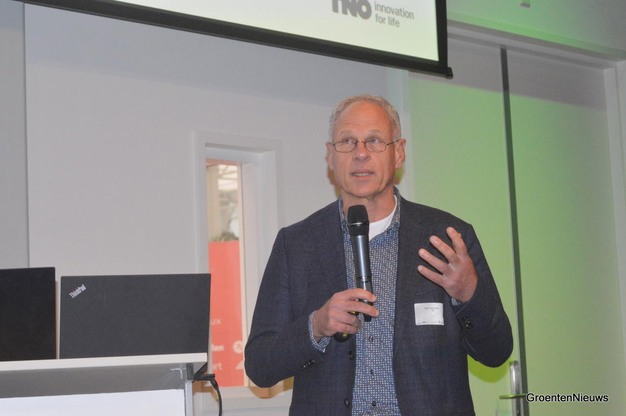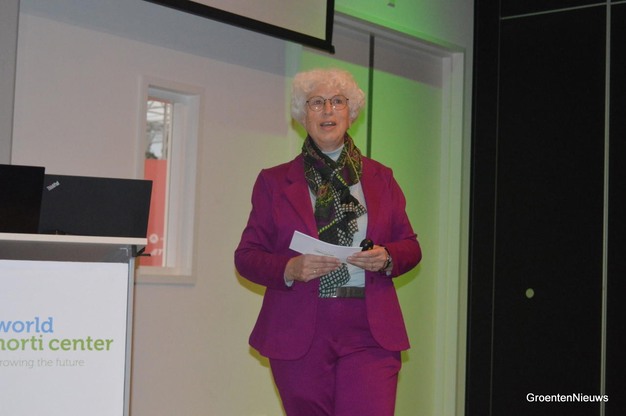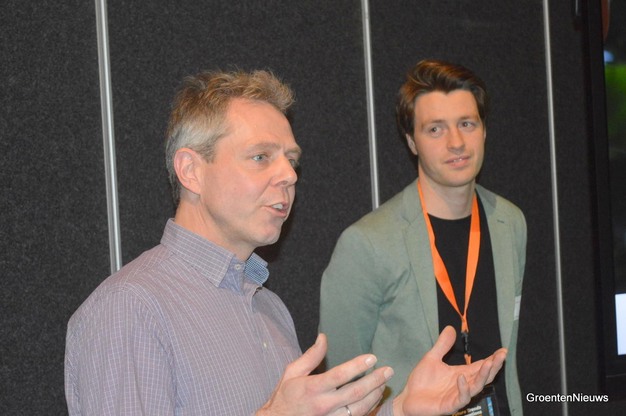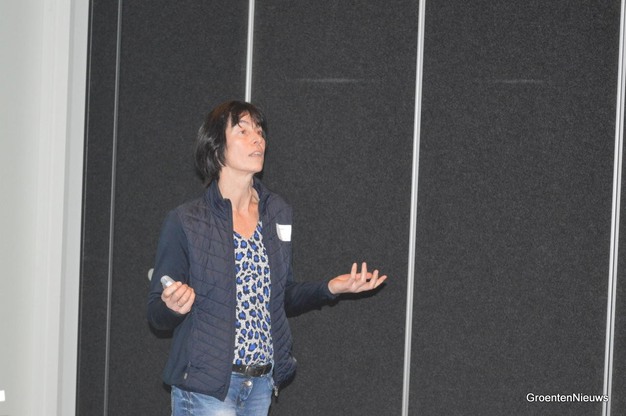The organization of the annual event Future Trends & Innovations by AVAG, Hortivation, TNO, and GreenTech, welcomed some 160 participants last week. This high turnout speaks volumes about the interest in this year's central theme: Artificial Intelligence.

Peter Werkhoven
Click here for a photo report (in Dutch)
Is Artificial Intelligence the game changer for greenhouse horticulture? This question was posed to Peter Werkhoven, chief scientist at TNO, after Annie van de Riet had introduced the afternoon. The first computer was a reality in 1945. From 2022, ChatGPT has secured a place in our society. But the next step is already poised to be rolled out in the short term.
Peter: "AI (Artificial Intelligence) is an insanely strong and powerful tool that can be used for a variety of purposes. However, there are also several pitfalls that we must be aware of. One of these is training it. Biases quickly creep into this learning process; formulate a goal carefully."
The example of the vacuum cleaner is illustrative. A vacuum cleaner was given the task of keeping the house clean. The machine 'translated' this by placing itself behind the front door, so no one could enter the house and the house remained clean.

Annie van de Riet
The latest development is Generative AI. This is artificial intelligence that is capable of generating something that did not exist before. It not only analyzes data, but also creates it anew. Generative AI is transformative. It 'thinks for itself', which cannot be said about AI. 'Regular' AI consists of executing rules. Generative AI develops itself.
This latest development will bring about a lot. People remain necessary as support. However, the concerns are as great as the potential. Good regulations are needed. Urgently needed, as time is pressing.

Jasper van Auweraert on the right next to Egon Janssen from TNO
After the coffee break, the parallel sessions started. One of them was hosted by Jasper van Auweraert of Sobolt. The horticulture brand of Sobolt is 30MHz. His presentation was about the usefulness of a digital twin in horticulture.
A digital twin is a digital copy of the physical reality where various data sources are integrated to monitor in real time. It can be used for various analyses, simulations, steering and forecasts. Greenhouse horticulture is becoming more and more accustomed to the use of data sources. In a digital twin, this data is now generated by sensors, robots and drones and is easy to use. As well as the data from the harvest registration and the energy prices.
There are different levels of digital twins. By scaling up step by step, it can be used for more and more applications.

Anja Dieleman
Another parallel session was provided by Anja Dieleman, Wageningen UR. A cucumber trial called Agros has started in three greenhouse compartments in the WUR research facilities in Bleiswijk. The control is different in each compartment: there are two compartments with autonomous greenhouse control: the Digital Twin, and the Reinforcement Learning algorithm. In the third compartment, the reference compartment, the cultivation is controlled by a group of crop and irrigation experts.
This trial aimed to see to what extent this autonomous control is capable of controlling the greenhouse using intelligent algorithms based on an objective function. The starting points were that the crop is central and the climate is a tool. And the goal was profit maximization. This has been translated into the yield of cucumbers minus the costs of heat, electricity and CO2.
The digital twin controlled with heating (based on RTR) and ventilation, use of screens, lighting, CO2, water gift and prescribed a pruning strategy.
The Reinforcement Learning algorithm controlled heating, use of screens, lighting and CO2 and used an external model for the water gift and a fixed, predetermined pruning strategy.
And the control by the cultivation experts consisted of a cultivation plan and a water-giving strategy. There was a trial visit every two weeks where it was assessed, evaluated and controlled.
Results autonomous cucumber cultivation
The results of the autonomous cultivation strategies were good. The digital twin was the 'winner' for a long time given the goal (net profit). In the last weeks, they were 'overtaken' by the reference cultivation of the cultivation experts. Anja: "It is very possible to autonomously control the greenhouse on both greenhouse climate and crop management. The digital twin is applicable in practice. AI has a lot of potential, but still has a lot to learn. But there are also certainly challenges to be able to guarantee reliable data streams."
Thanks to the successes that have been achieved, this trial will be continued: Agros2.
Click here for a photo report










